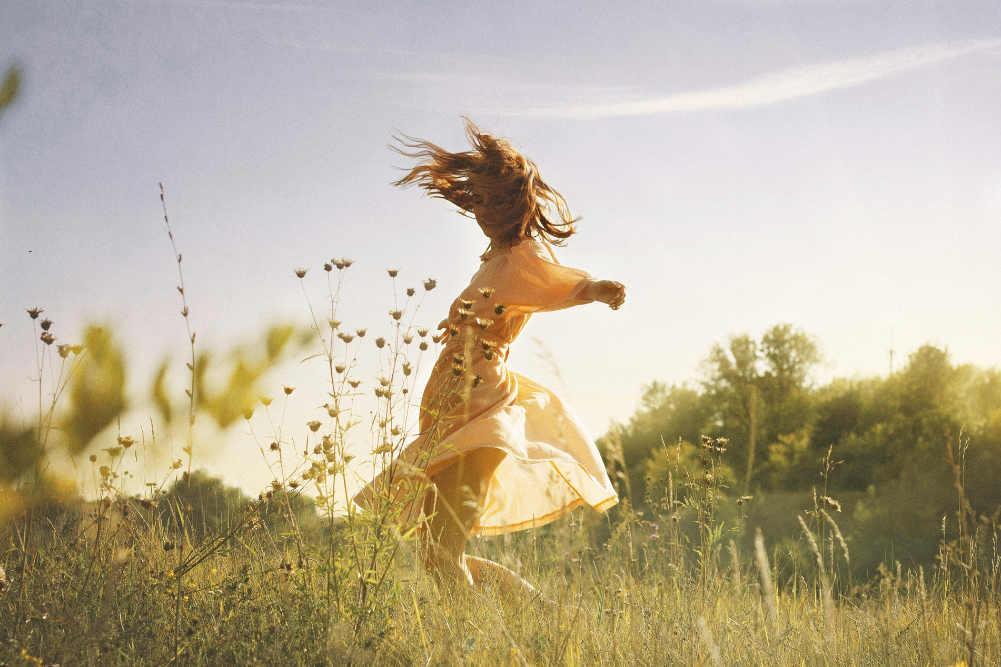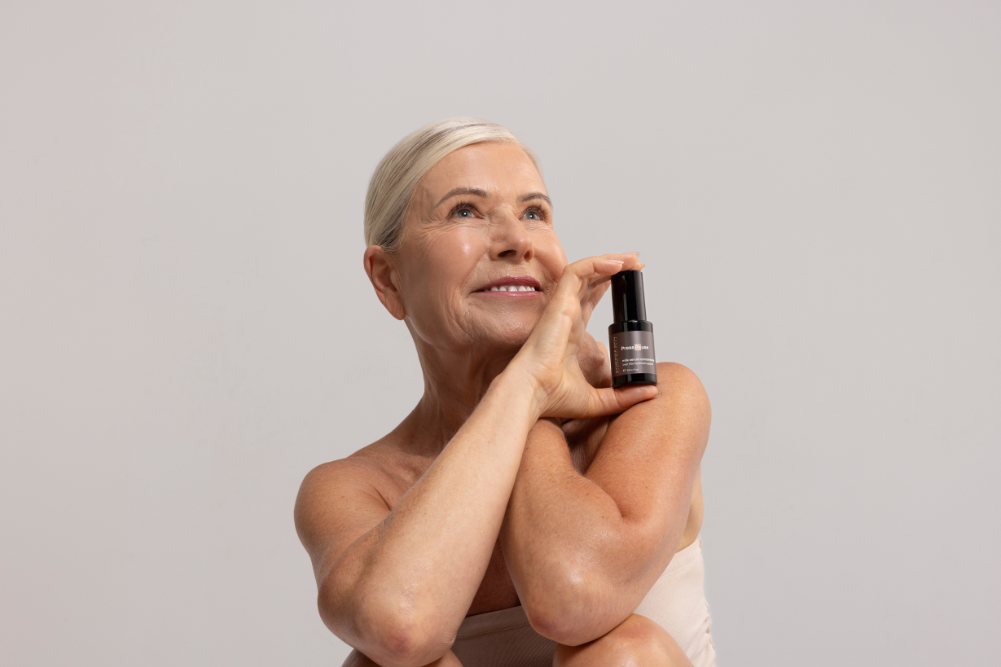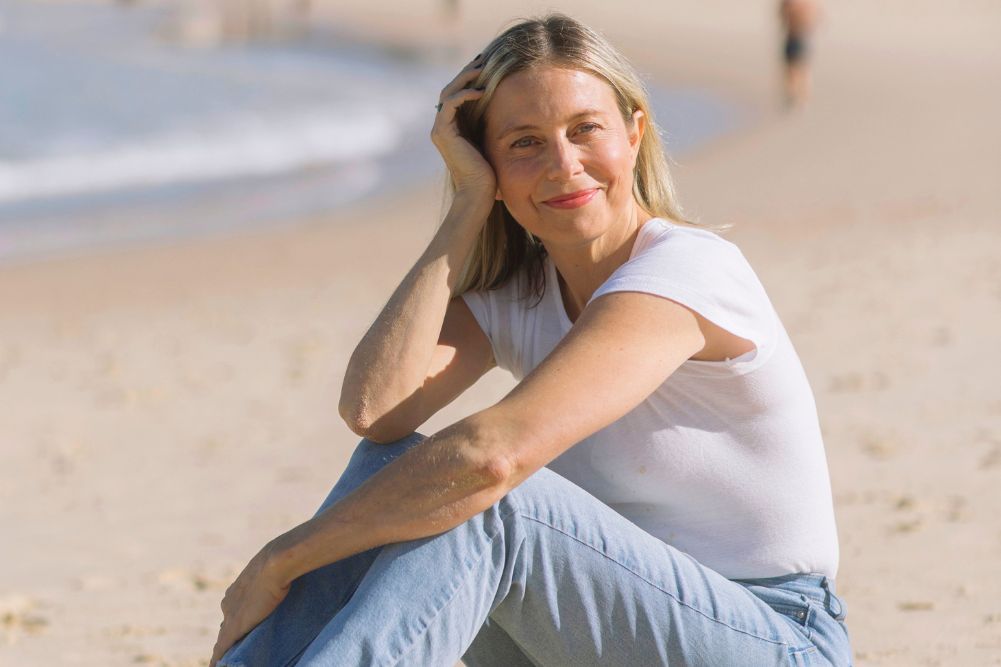Getting started in martial arts
Many movies have brought a dynamic portrayal of martial arts fighting to the big screen through experts such as Jackie Chan and Bruce Lee. Even children’s movies such as Karate Kid and the animated Kung Fu Panda have used the power of martial arts at the centre of their story. Yet there is far more to martial arts than combat and a way of learning self-defence. Martial arts embody spiritual development as well as physical training. Within the very essence of martial arts training are core values such as courage, tolerance and respect for all living things.
The martial arts experience
In learning martial arts you’ll improve your cardio fitness, core strength, and flexibility. It’s also the kind of sport many families enjoy together, says Sensei Pam Smith, National Coaching Director Australian Karate Federation. “Whole families join clubs. You’ll have Mum, Dad and the kids training — sometimes sibling rivalry comes into it and at others you find Mum and Dad try to outdo each other, but it’s all in good fun,” says Sensei Smith.
Students of martial arts begin their training for many reasons. For some it’s to increase their physical fitness and flexibility, while others want to learn the art of self defence or to increase their confidence and self esteem. As they follow their own path, the reasons people continue to study martial arts evolve to a much deeper level, says Sa Bum Nim Ron Rees, senior instructor in hapkido. “The very nature of martial arts is a process of character building; it becomes a very personal journey,” he says.
Through martial arts you’ll also develop perseverance, discipline, loyalty and serenity, qualities that can benefit you in your daily life. Martial arts will enhance your understanding of the natural world you live in and help you to develop deeper, more meaningful relationships with others.
“It doesn’t matter what discipline you do, the ultimate aim of a martial art is to be in harmony with yourself and the people around you,” says Sensei Tony Smibert President, National Aikido Association of Australia. Training in martial arts can also immerse you in the culture and language of the country of its origin if you choose.
Choosing the style for you
There are many different types of martial arts, ranging from gentle forms of tai chi to more moderately physical aikido and hapkido, and then more intensely physical judo. Unlike with many other types of sports, your ability to do martial arts doesn’t end as you reach middle age. “Even if you’ve never considered martial arts until your 40s, 50s and beyond, you can still gain enormous benefits,” says Sensei Smith. “Martial arts can also improve your self esteem and allow you to take more control of your life. It’s very empowering,” she says.
The way you progress through different levels of mastery varies between the different martial arts. It generally includes attaining different coloured belts that symbolise progress by achieving set objectives. Beginners are usually white belt and then progress through to black belt; black belt seniors then progress to 1st Dan, 2nd Dan and 3rd Dan and so on. Not all disciplines use the belt grading system.
How to choose
With different types of martial arts available, and many schools (dojos) offering classes, when choosing what and where you want to study, assess these three important things:
- The art they are practising ought to appeal to you. You need to be able to look at it and say to yourself, I’d like to do that, says Sensei Smibert.
- Check the credentials of the school very carefully. Anyone can set up a school and rank themselves to any rank they choose. Ensure the school is internationally recognised so you know they are the real deal.
- Assess the kimochi (the feeling or vibe within the place). It doesn’t matter if it’s a martial art you want to learn and even if the instructors have recognised credentials. If you don’t feel comfortable, try another school, suggests Sensei Smibert.
When you begin your journey learning martial arts you may also discover that after a while the martial art doesn’t seem to be what you had anticipated. Don’t be disheartened. “Often you need to try several different styles before you find one that feels like the right fit for you,” suggests Sa Bum Nim Rees. “All martial arts develop you in different ways. They will be going to the same end but the path you take can be quite different from art to art.”
To assist you in beginning on the martial arts path here’s a guide to some of the more common forms. Tai chi is addressed in an article on its own in this issue.
Aikido
Harmonising the body and universal spirit — this is the way of aikido. Aikido is made up of three characters. The first is ai, meaning “to come together, to harmonise”. The second, ki, represents inner energy. The third, do, translates to “the way”.
Aikido is the virtual new kid on the block within the vast cache of martial art disciplines. It evolved from traditional jujitsu and was practised and refined through the lifetime of its founder Morihei Ueshiba, who died in 1969. He believed it to be a purification system for both mind and body.
“Aikido incorporates circular, flowing movements. It is all about another person’s energy harmonising with your own energy,” says Sensei Smibert, whose teacher was an apprentice to the founder of aikido. “All training is a means of biofeedback,” he says. “Whatever we do is preceded by mental intention — mind and body need to be co-ordinated and in harmony with the physical energy of the other person. Movements are of evasion and control rather than an enemy that has to be overcome.
“The ki in aikido also gives people great strength in relation to their size. Once you learn to access that energy you’ll be very strong and you have dangerous techniques you could apply, so you are instantly responsible for being gentle,” says Sensei Smibert. “Aikido has also been described as a form of moving meditation. You need to be calm within while you are physically moving.”
Aikido can also involve spiritual elements of deep meditation and chanting. One of the mediation and chanting practices Sensei Smibert takes part in is a powerful way to connect to the universe. “In winter we hike up a mountain and sit under the stars, chanting and meditating, and in the early hours of the morning we hike to the summit and sit looking straight at the sun as it rises. You see the movement of the universe and begin to see yourself connected to the universe,” he says.
Kung fu
Kung fu is arguably one of the world’s most widely known martial art forms. It is an ancient style of fighting and discipline incorporating many body movements including feet, legs, arms, hands, body, head and eyes. True kung fu teaching encourages students to avoid fighting, but knowing you have the ability to defend yourself can build inner confidence.
“Kung fu is an ideal all-round exercise that has a broad range of holistic health benefits,” says Master (Sifu) Alice Bei Dong, former Asian World Champion. “It improves both physical and mental health — and promotes an overall sense of wellbeing.
“Kung Fu’s origins are deeply rooted in Chinese history and culture,” says Master Bei Dong. There has been some debate about when it began. Some historians say 4th century monks incorporated kung fu to keep them physically and mentally fit while following their rigorous meditation demands and preparing for the afterlife. However, the reality is no one really knows its exact origin.
From its early beginnings, it evolved to many different styles and is regarded as an open-form of martial art, meaning it can be modified and adapted.
Kung fu helps you to develop both inner vitality and your mind. “At its very core is the practice of aligning with ki, the universal energy or life force which surrounds all living things,” says Master Bei Dong. “In kung fu you use the force of ki — every movement incorporates ki to control your mind, body and balance,” she says.
Kung fu is suitable for all age groups and fitness levels, as students can work to their comfort levels based on their physical abilities. It is also very beneficial to more mature participants as it helps maintain strength and improves flexibility and balance. Practising kung fu is also a great way to reduce your stress levels.
Jujitsu
Jujitsu defined is ju (gentleness and suppleness) and jitsu (technique, art or skill). This ancient martial art originated in Japan. Techniques associated with juijitsu have been documented as far back as the year 23 BCE, according to the Australian Juijitsu Federation.
“Jujitsu is a martial art that offers a broad range of health benefits,” says Sensei Matthew Cugola, Chief Instructor Martial Arts Qld. “Physically you’ll be faster, stronger and more flexible. As an added bonus, it’s a great weight-management program, giving you an all-over body workout.”
Early jujitsu was a war-like art designed for close-quarter combat and done in full armour. It’s now evolved into a gentler but more defensive art form. Jujitsu is all about getting up close and personal with your opponent. “It’s a study of your opponent’s balance — the main principle behind every style of jujitsu is to keep your balance and take away your opponent’s balance,” says Sensei Cugola.
“Jujitsu was one of the original styles of ancient martial art. Other forms that evolved from it include aikido, judo, kenpo karate and Brazilian jujitsu.”
Jujitsu is a complex style of martial art. It can take many years to move through and master the different grading levels. Perseverance, focus and self discipline all help the student to understand its teachings. Spiritually, jujitsu can encompass meditative introspection and deep reflection. Some schools also incorporate massage and healing techniques into their teachings. Other schools focus on mastering weaponry techniques or defensive movements for hand-to-hand combat, including grappling, throwing and joint locking (levering your opponent’s joint so it can move no further).
To take part in jujitsu you need only an average level of fitness to learn and participate in some styles, however disciplines that focus on throwing, such as kyushin ryu jujitsu, require a moderate level of fitness, strength and agility.
Taekwondo
This ancient martial art is characterised by powerful, high-speed kicks. Its origins can be traced back to the Koguryo dynasty in Korea, which was founded in 37 BCE, according to Taekwondo Australia. Wall murals depict students of the martial art fine-tuning their skills.
This dynamic martial art has been an Olympic event since the Sydney Olympics in 2000. It could be described as a weaponless means of self defence, according to Master Coach and National Sports Committee Chairperson, Taekwondo Australia, Jodi Brown. “It incorporates many movements, including kicks, and requires agility and speed — it’s power-based,” she says. “All the kicks are waist high and above, and it also includes punching and blocking.”
At beginner or novice level, you work to improve flexibility then move on to more advanced levels that enhance your skills and ability. “Taekwondo can help you to increase your fitness levels and, like other martial arts, it’s also very social,” says Master Coach Brown. “Learning taekwondo also gives you a great mindset — a can-do attitude.”
The culture is one of respect for others and yourself. The spiritual and philosophical principles of taekwondo are based on five tenets. These are designed to enhance the positive development of the whole person so they, in turn, can constructively influence other people in their lives. The tenets are courtesy, integrity, perseverance, self control and indomitable spirit, which reflect strength and inner resilience.
“Taekwondo incorporates ki hap, focusing the spiritual force with a yell when executing punches and kicks. It’s basically an expression of power,” says Master Coach Brown.
Some classes also include a meditation component. Breathing techniques teach you to relax through your body and tap into your internal sources of power. Taekwondo is suitable for all age groups but you do need a moderate level of fitness and flexibility. If you are prone to back problems it may not be the sport for you as it does incorporate fast and high kicks.
Karate
Karate is one of the most dynamic and easily recognised forms of martial arts. “Karate originated in Okinawa in around the 16th century,” says Sensei Smith. “From there it evolved into four recognised systems: goju, shotokan, shito-ryu and wado-ryu.” Further systems of karate have also evolved based on these four.
The word karate means “empty hands”. “This dates back to when the Japanese invaded Okinawa. They took peoples’ weapons away and had to rely on their empty hands to defend themselves against the invaders,” Sensei Smith explains.
Karate involves defensive moves such as blocking, and also strikes and kicks. As with many other martial arts, it’s never too late to learn. Sense Smith’s oldest student to date is a 75-year-old woman. “She used karate to stop would-be thieves who had planned to run off with her handbag,” she says.
“The spiritual side of karate involves unity of mind, body and soul so you reach a point of total focus, total awareness,” says Sensei Smith. Students of karate aim to achieve inner focus and spiritual enlightenment that they can use each and every day of their lives.
All clubs have their own training and grading syllabus. To advance to the higher levels of karate, students must work to cultivate spiritual power through ki.
In karate, essential techniques are demonstrated in fixed exercises called kata, in which the student performs a series of body movements including jumping, punching, bending and balancing at different speeds. Students also take part in sparring, kumite, against other students.
“In karate, you are constantly learning. You master one rank and move up to the next rank and then you are learning new things all over again,” says Sensei Smith. Studying karate, like other martial arts, is a constantly evolving journey offering challenge and quiet triumph as you master each level.
Judo
Judo is characterised by its throws but there’s a lot more to this ancient Japanese martial art. Judo is a sport and has been an Olympic event since 1964. It was developed from Japanese jujitsu in 1882 by Jigoro Kano. “He evolved judo into more of an art form with practised techniques,” says Sensei Dennis Iverson, National Development Coach/Co-ordinator for Australian Judo Federation.
Judo translated means “gentle way” but it can be quite a vigorous workout. Judo is a great way to boost your cardio, muscular fitness, flexibility and endurance, according to Sensei Iverson. “You use every muscle and part of your body — except your ears, basically,” he says. “It’s a full-body sport.”
Movements in judo include throws; groundwork, including strangles, arm locks or hold downs; and striking techniques, including kicking and punching. As with many other martial arts forms, size really doesn’t matter; you don’t have to be robust and strong to take part. Some say the philosophy behind judo is to back away from your opponent and to let them defeat themselves. This is because judo is all about leverage. “The idea is to use your opponent’s balance against them,” explains Sensei Iverson.
A typical judo session will include a warm-up, which involves stretching, and practising technical training. To progress through the levels you need to learn the syllabus for each grading and you must also wait a minimum time before you move to another level.
Learning and practising judo is an ideal way to attain great physical and spiritual strength, according to Sensei Iverson. As well as learning how to control your body, you’ll develop quick reflexes, balance and physical co-ordination.
“Judo is a high-impact sport. Older students are able to participate in judo, however they would be advised to seek a club with other older participants or one that has a strong social component,” suggests Sensei Iverson.
Hapkido
Hapkido means “the way of combining internal energy”. The art of hapkido encompasses literally hundreds of different martial art techniques. Hapkido has a strong mind and body connection, according to Sa Bum Nim Rees. “While we are teaching our body to be balanced, controlled and responsive, we are also training our minds to be focused — that is part of the meditation,” he says.
Hapkido’s origins are clouded in controversy but historians agree it’s a relatively new Korean martial art that has evolved from other martial art forms. The official name “hapkido” was introduced in the late 1950s, according to the Australian Hapkido Association.
Hapkido shares some techniques with other martial arts, including kung fu, taekwondo and jujitsu. It is generally characterised by a broad range of powerful movements such as twists, throws and striking. The study of hapkido can also include the use of traditional weapons, such as a sword, short stick, rope or staff.
Students of hapkido also use pressure points to overcome their opponent. “For this reason, you don’t have to be strong to do hapkido, so it can be particularly appealing for children and women,” says Sa Bum Nim Rees. “Techniques employ the practice of using your opponent’s power and aggression against them. We don’t meet force with force. Instead, we meet it with gentle, flowing movements — it’s often described as water flowing around a rock, to be soft and giving,” he says.
“Hapkido involves two different kinds of breathing. The first is strong breathing exercises designed to train our bodies to use core energy and direct it. It’s similar to martial arts ki — the spirit yell,” says Sa Bum Nim Rees. “There are also moving forms where we breathe more slowly, and controlled. The focus here is to be calm and to be internally balanced. The movement is similar to that used in tai chi.”







